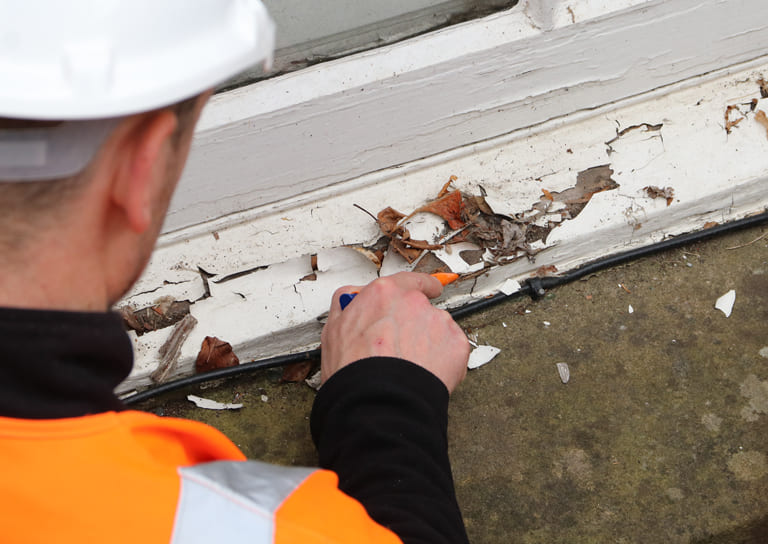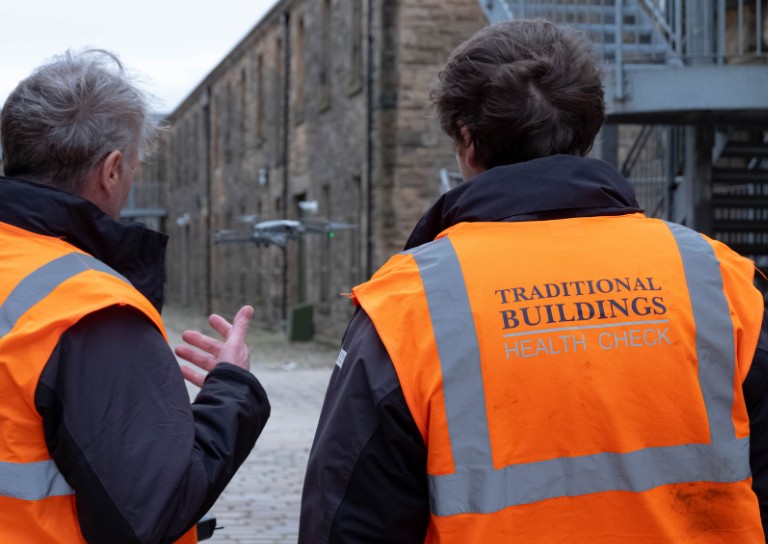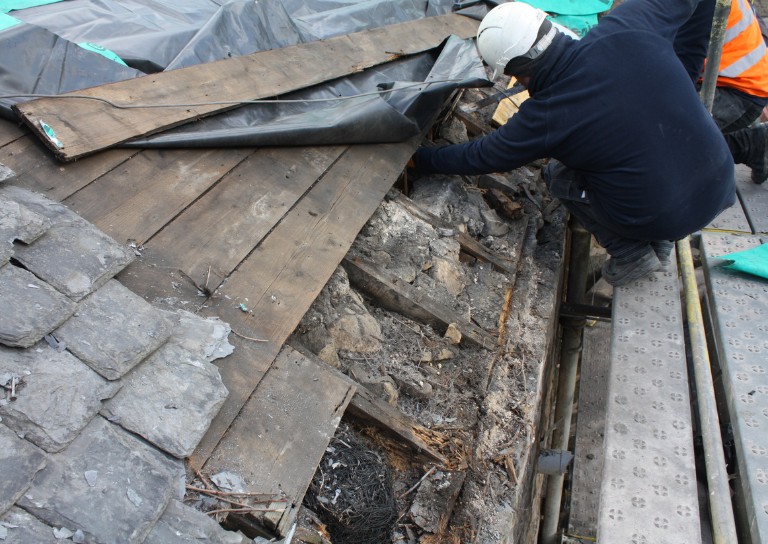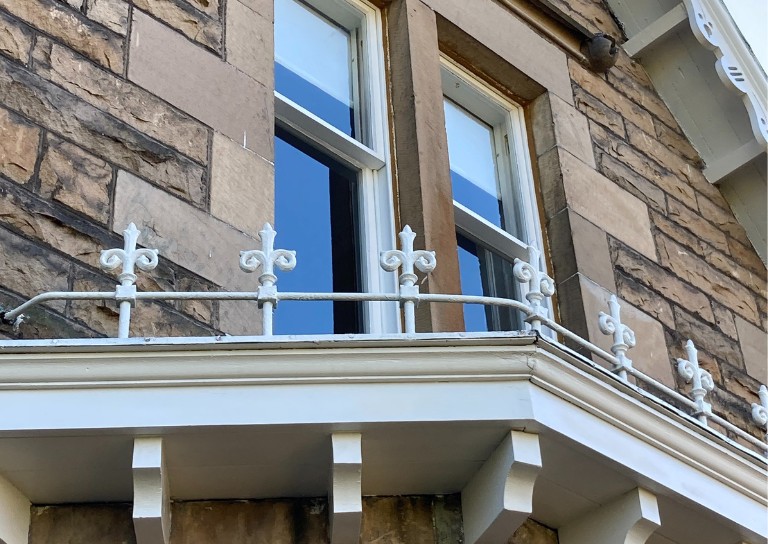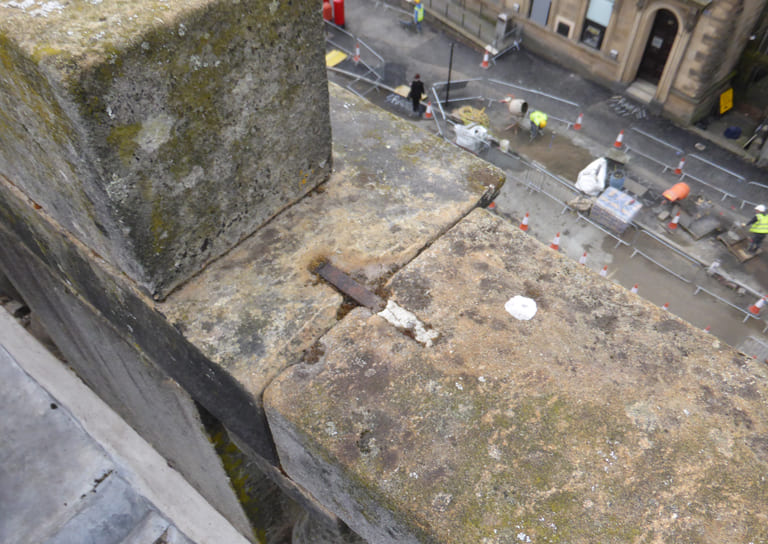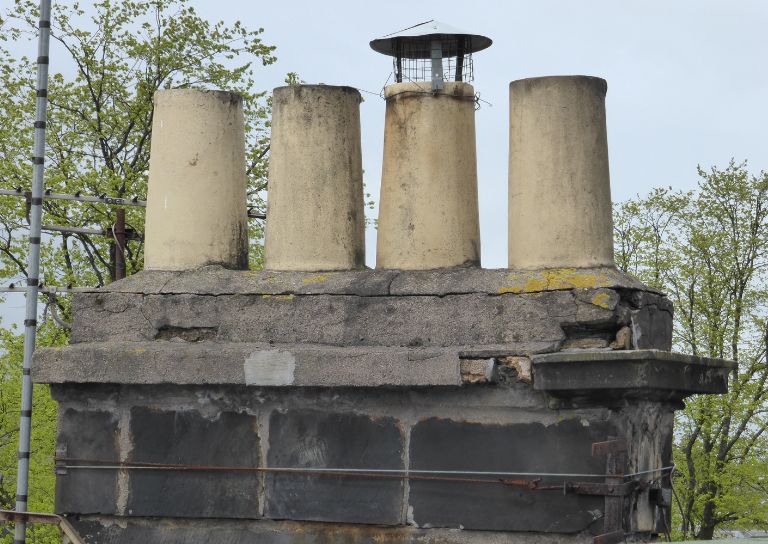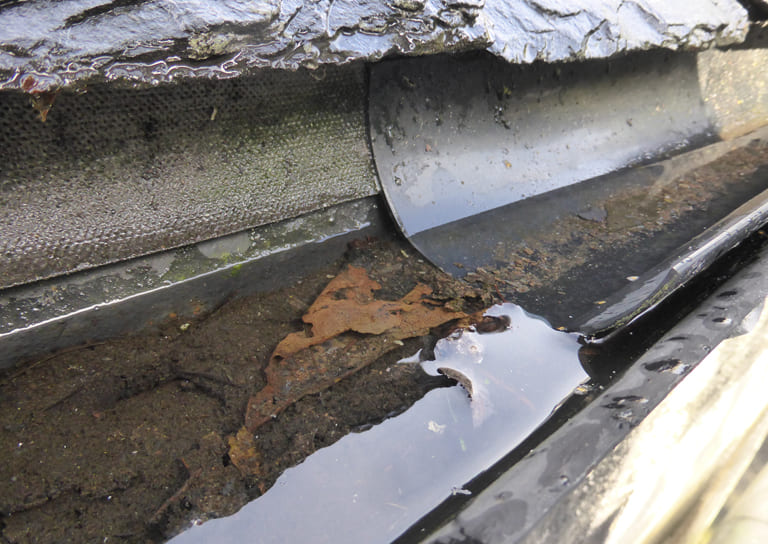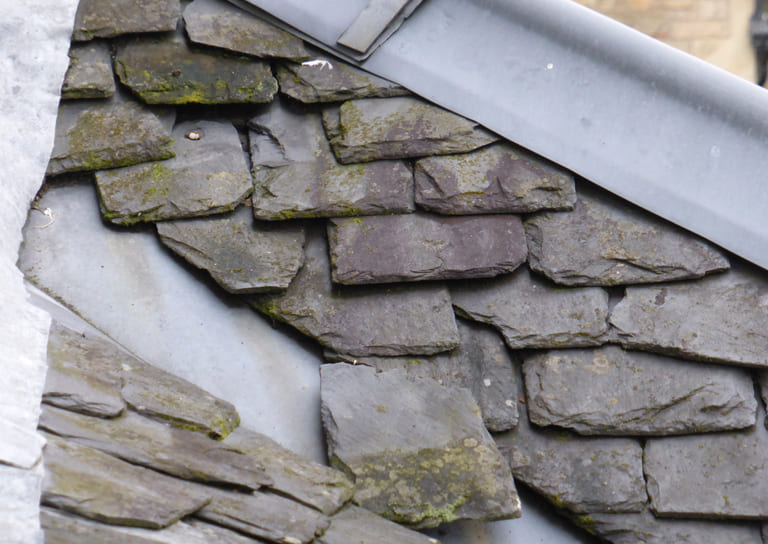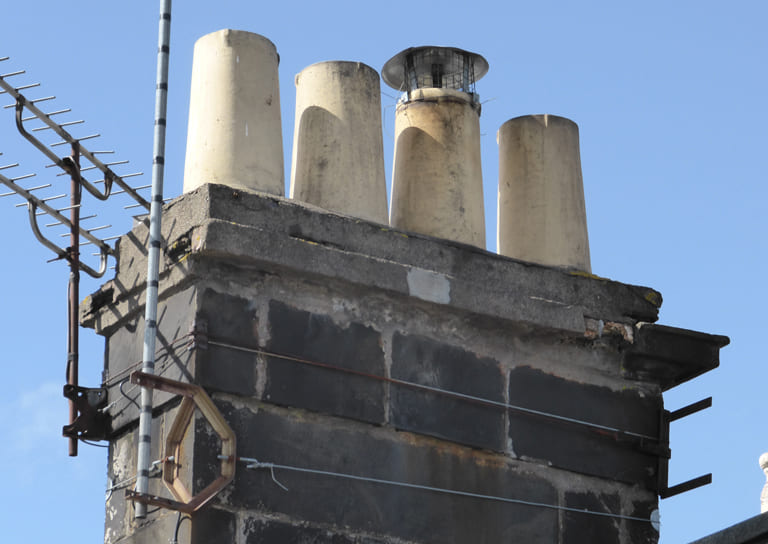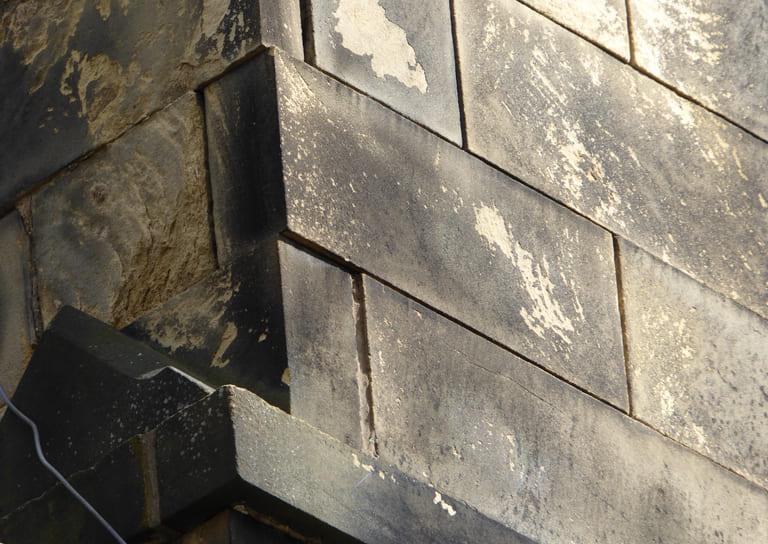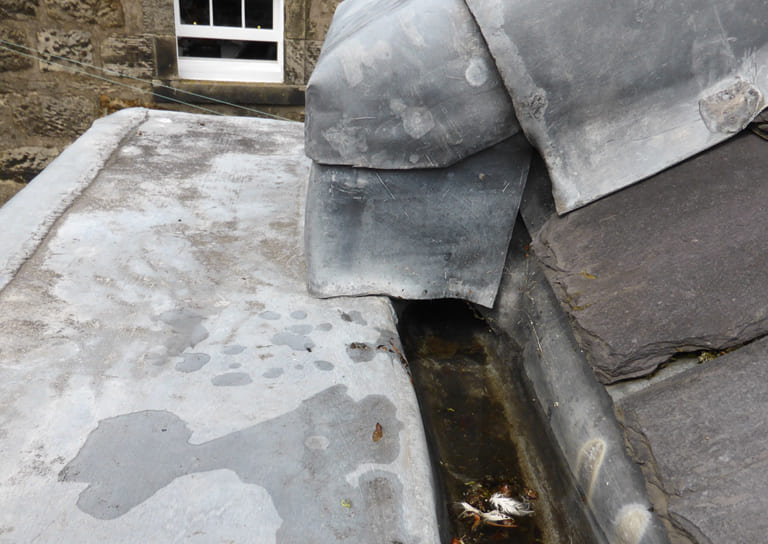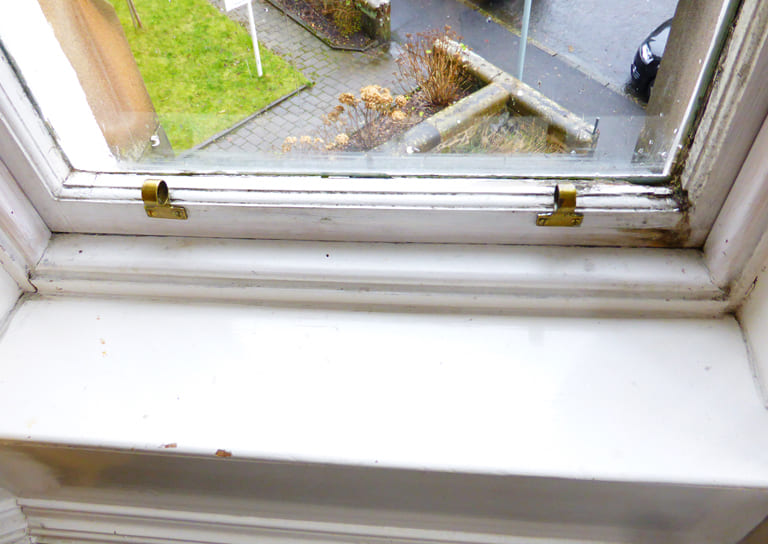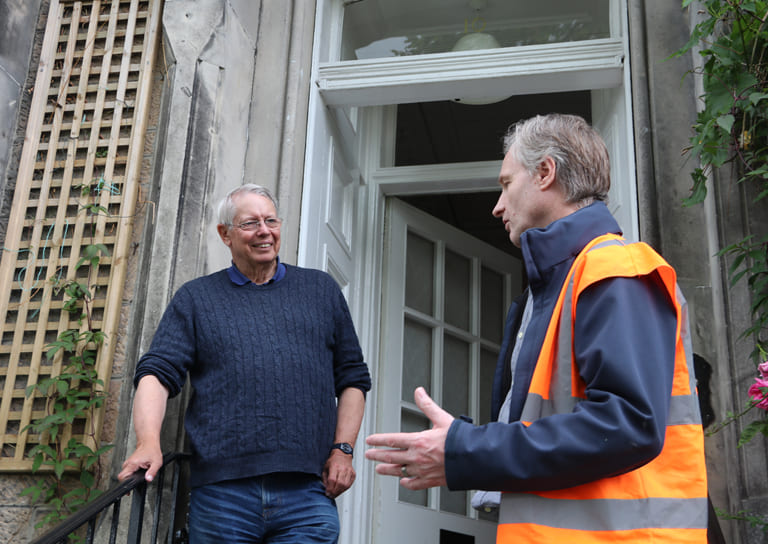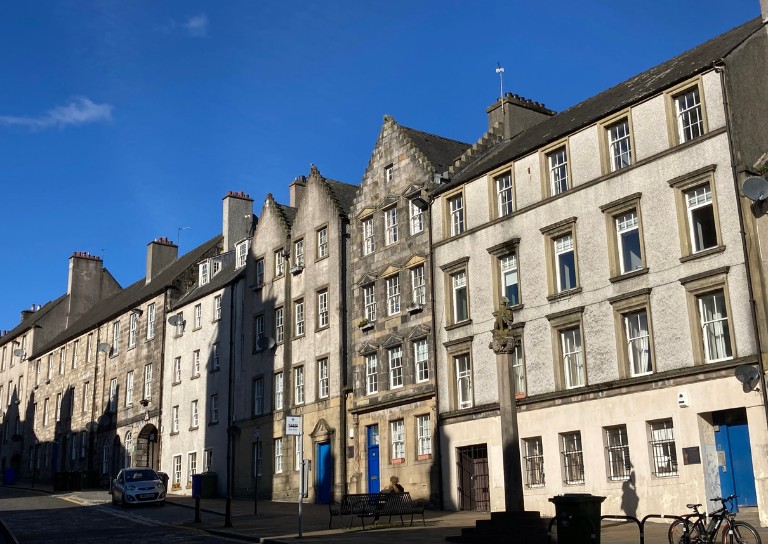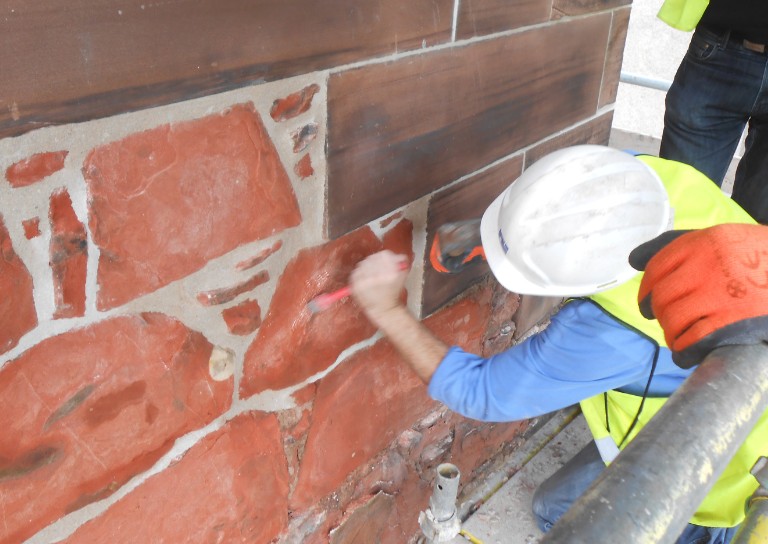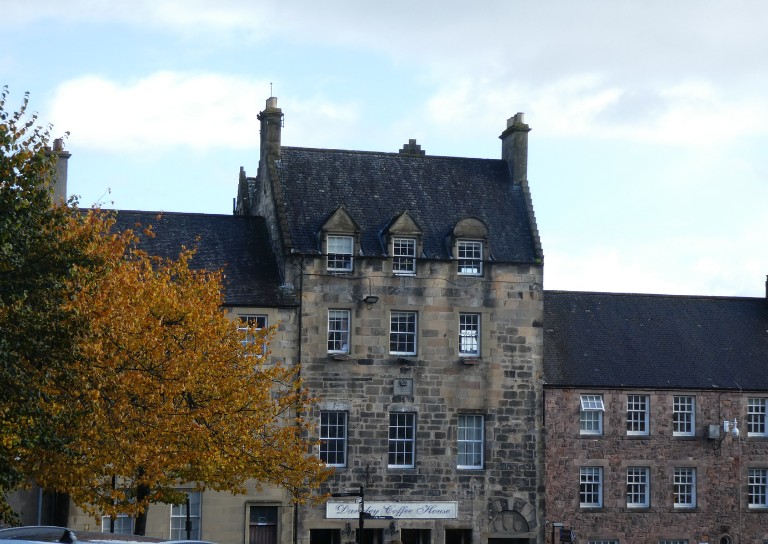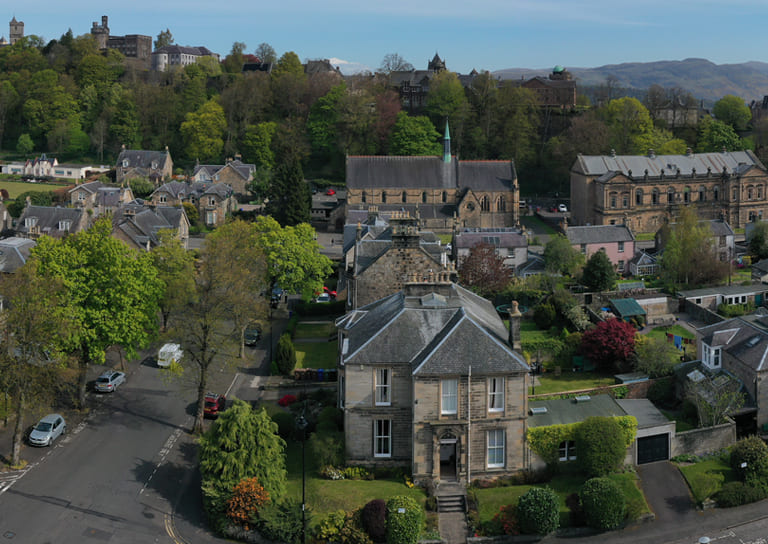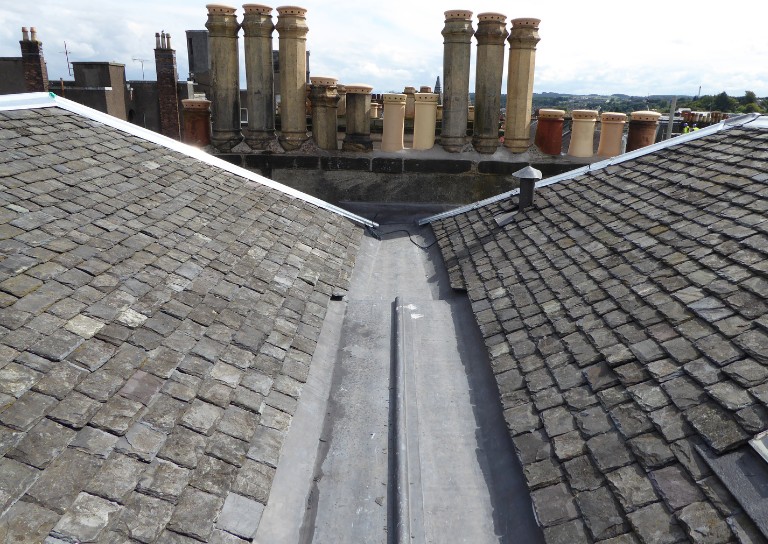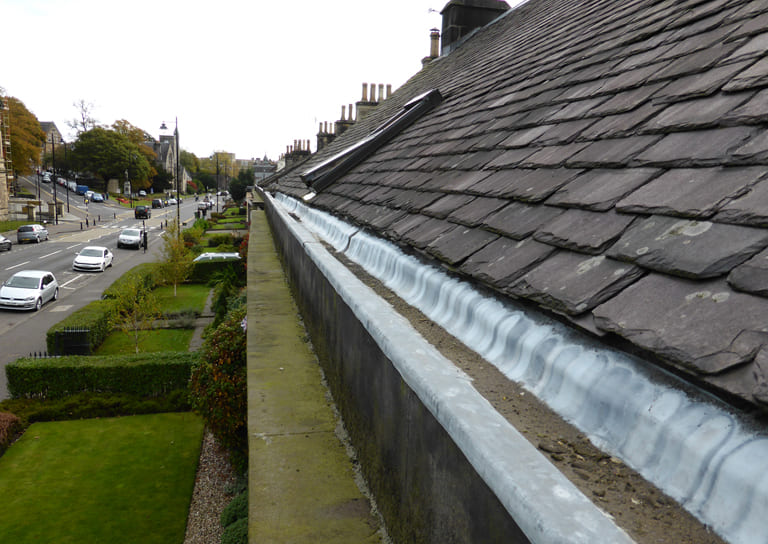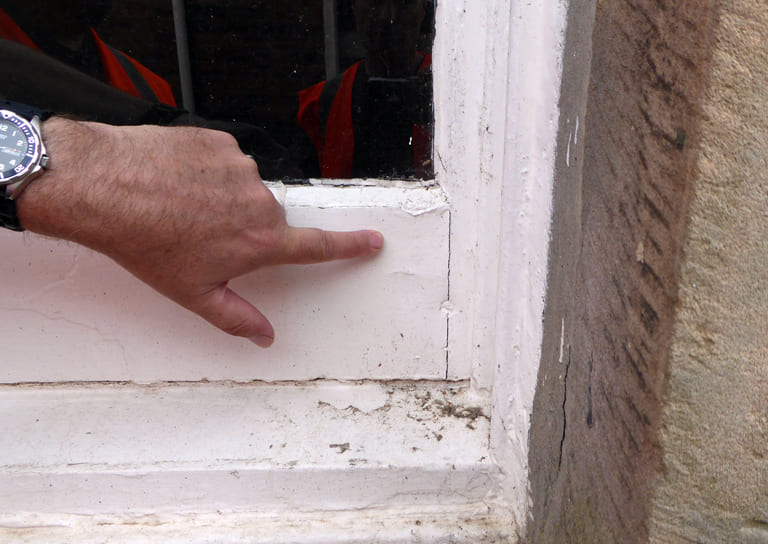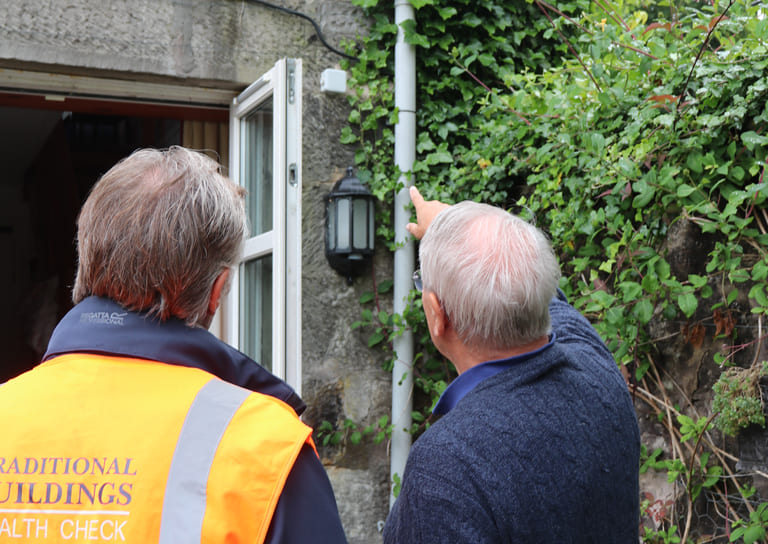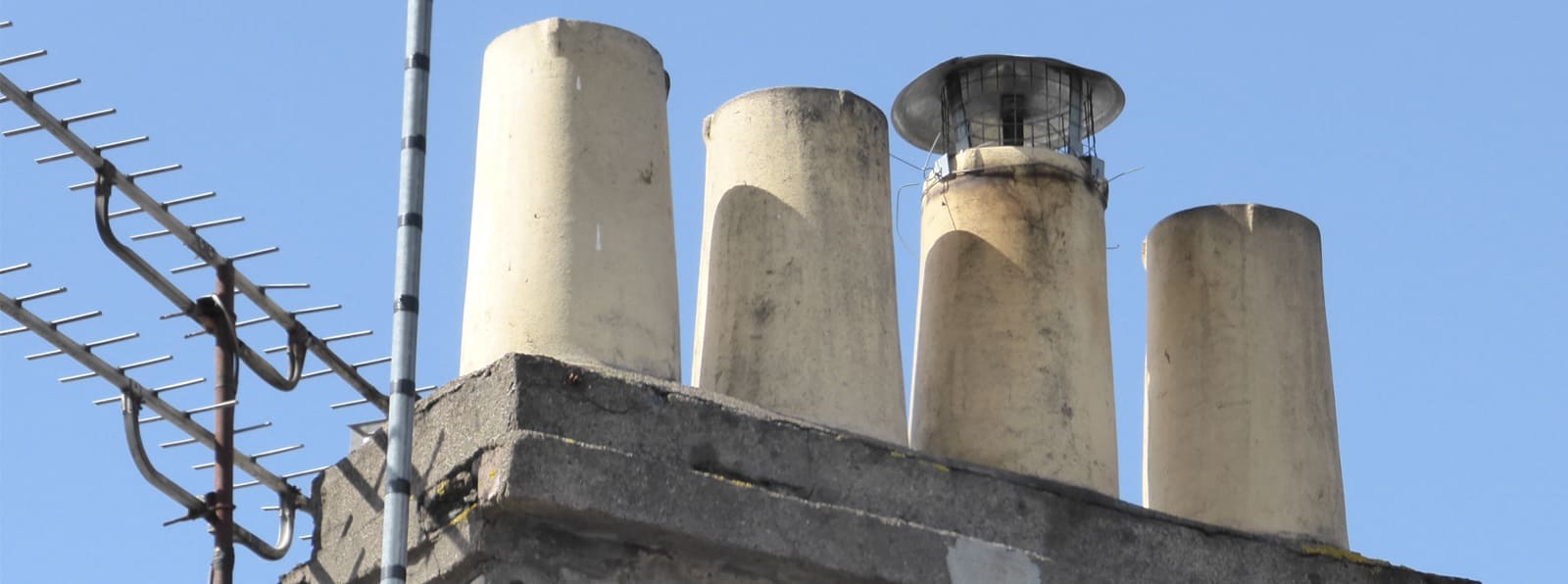Chimney stacks and pots in older buildings
How chimneys work in traditional properties
Chimney stacks and their flues are an integral part of the structure of traditional buildings, designed to remove combustion gases and assist in natural ventilation. Chimney stacks also contribute to the architectural expression of your traditional building and the wider streetscape. Being in an exposed position, they can start to show signs of disrepair. High level masonry in poor condition can pose a risk to building users and members of the public and issues should always be addressed promptly.
The HES Inform Guide Domestic Flues and Chimneys provides additional information.
Traditional chimney construction
The chimney stack is where the fireplace flues terminate above the roof. They may be built of dressed stone, rubble or brick. Chimney flues, constructed within the depth of the external wall, are brought together in the chimney stack and divided by walls known as bridges (or feathers).
Sometimes chimney flues were lined with ceramic liners or are coated with a lime mortar during construction (pargetting). The flue is terminated by a chimney pot (or can). The stack is capped with a cope, the pots being held in place with mortar ‘haunching’ or sometimes set into a rebate in the cope for a more secure fixing.
Common chimney problems on older buidlings
What you can do
- Any defects in the physical condition of the chimney should be investigated further by a specialist. Eg: skilled stonemason for construction issues, or a chimney sweep to undertake cleaning of the flue.
- Owners of traditional buildings in Stirling can join the Traditional Buildings Health Check and get a regular drone survey of their roof
Smoke escaping from a flue could contain carbon monoxide which can cause death. In this case, cease to use your fires immediately and contact a chimney specialist to test the integrity of the flues. Always have a working Carbon Monoxide detector in each room where there is a heating appliance such as an open fire, stove or gas cooker.

